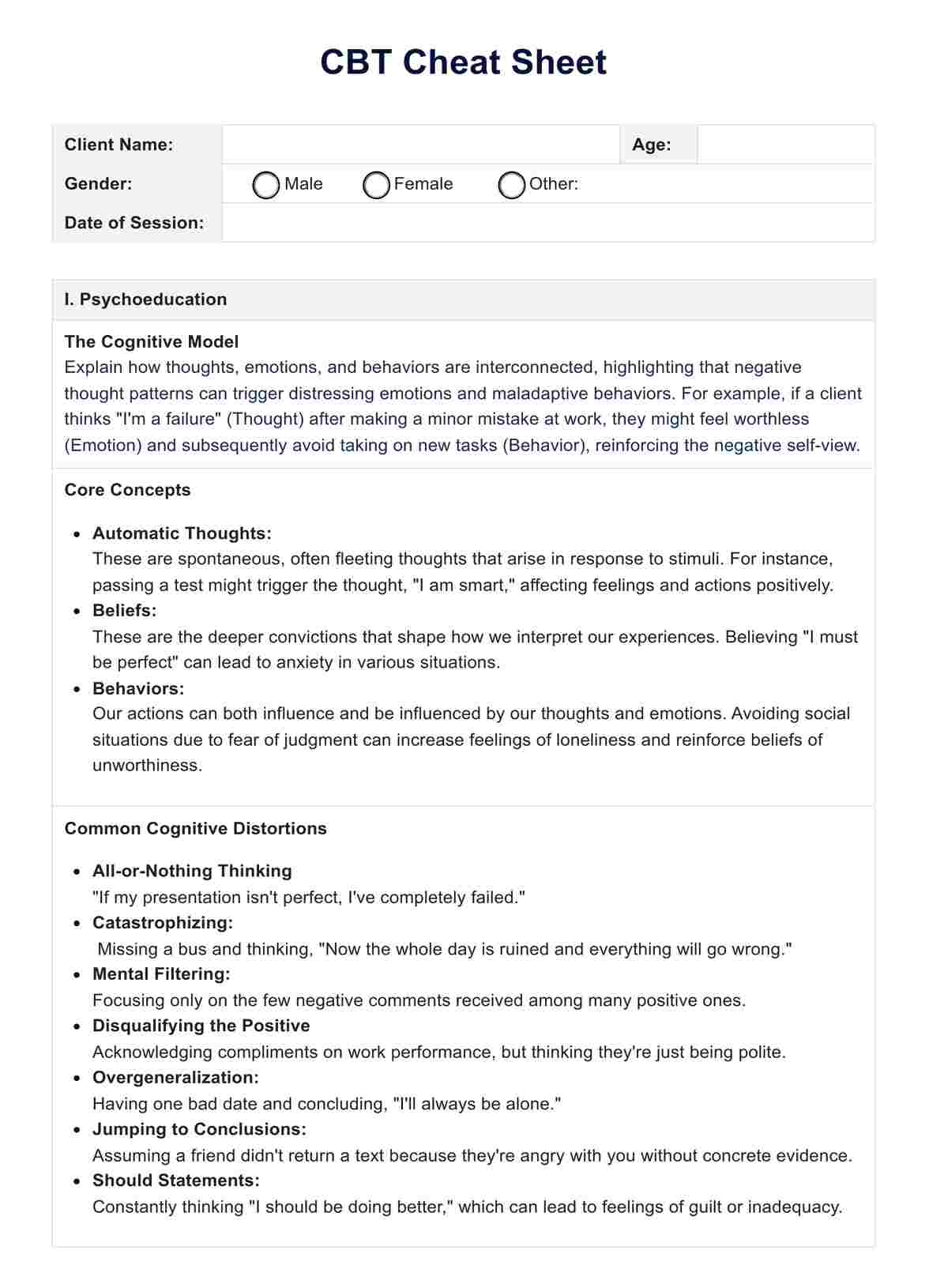Unlike some other therapy forms that delve into past experiences to understand current feelings, CBT is more present-focused and problem-oriented. It emphasizes practical strategies that can be implemented daily and typically involves a more structured approach.

CBT Cheat Sheet
Access a free CBT Cheat Sheet as a handy guide through the process of cognitive behavioral therapy with clients. Download the PDF resource here.
CBT Cheat Sheet Template
Commonly asked questions
A CBT session often starts with a review of the previous session and homework assignments. Then, the discussion shifts to current issues and challenges. The therapist and client collaborate to identify patterns of thought and behavior to target and develop strategies for change.
Like any therapy, CBT might not work for everyone. It is then important to communicate with your therapist if you feel the strategies aren’t helping. Your therapist can adjust the approach, try alternative techniques, or may suggest complementary therapies.
EHR and practice management software
Get started for free
*No credit card required
Free
$0/usd
Unlimited clients
Telehealth
1GB of storage
Client portal text
Automated billing and online payments











